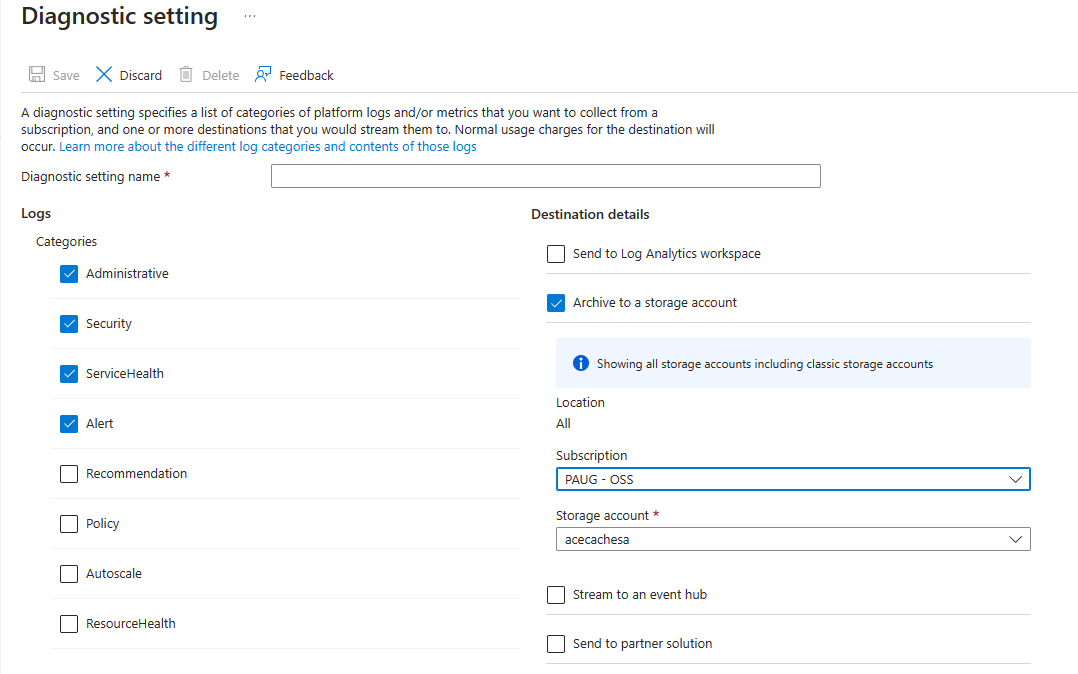Moving resource in Azure - Activity Log
In this article we’ll discuss implications of moving resources in Azure while focusing on Activity Log of a moved resource. As in some scenarios you may have lots of various processes, which are bases on entries of this particular log, preserving it will become crucial for day-to-day operations. Let’s see what happens if we have an Azure service, and we decide to migrate it to another scope.
Playground
In order to verify the scenario, I decided to create quite a simple infrastructure, which consists of two Azure resources:
- resource group
- Azure Storage account with a single container
When deployed, I can see, that there are some entries in my Activity Log:
Looks good so far. Let’s create a new resource group using Azure CLI:
az group create -n "rg-blob-move-2-we" -l westeurope
This resource group will be used as our target for the move operation. Let’s do that.
Moving a resource
There are multiple ways to move a resource in Azure. In our exercise, we’ll just go for Azure CLI to keep the operation simple:
az resource move --destination-group "rg-blob-move-2-we" --ids "/subscriptions/.../resourceGroups/rg-blob-move-rg/providers/Microsoft.Storage/storageAccounts/sablobmovewe"
After a moment, we should be able to see, that the storage account is in another resource group. Let’s check its Activity Log.
Remember, that moving a resource, which has a role assignment scoped to that resource, won’t recreate that role. You need to apply all the assignments once again in order to restore access.
Once the move operation is completed, we can verify if there’s a trace of that operation in our Activity Log. Surprisingly, the log is almost empty:
Even though we see nothing particular in our log, the moved resource still preserved its configuration and data plane. That’s exactly the same storage account as we had previously - the only difference is lack of entries in Activity Log.
Implications
When a resource is moved, initial entries of Activity Log imply, like it was recreated, not moved. This may cause some difficult time when trying to debug what happened (for instance - why some services lost access to your resource). It’s also a bit confusing - suddenly you have a resource with no history. If there were important information inside the log, they’re gone. If you’re a developer, you could decide to just don’t care. From the operational perspective, it may cause problems, especially if a resource is no longer compliant with your regulations.
Solution
If Activity Log is an important feature of Azure resources for you, you may find exporting it quite important. Fortunately, it can be easily automated using diagnostic settings - it works in the same way as you would configure exporting of logs & metrics from a service itself:
In general, the only problem here is lack of proper warning when performing the move operation. Sure, it requires you to ensure, that you won’t be affected by broken resource ID of a moved resource, but there’s no information, that you’ll lose activity log as well. This is why proper management of this log becomes crucial in certain scenarios - if you fail to properly export and save it, you may quite easily erase all the history of a resource with no possibility to restore it.



